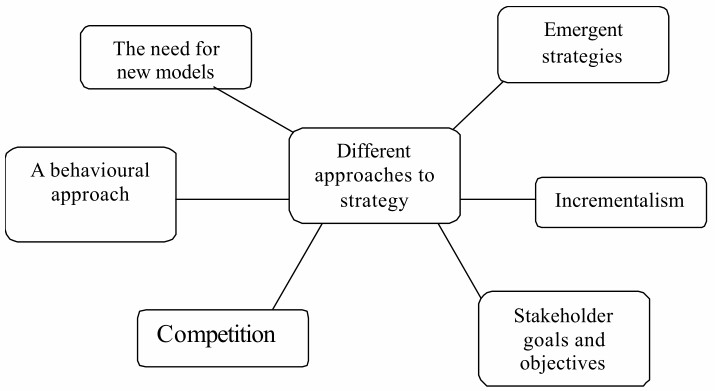Mintzberg lists these activities in crafting strategy.
| Activity Manage stability | Most of the time, managers should be implementing the strategies, not planning them. Obsessions with change are dysfunctional. Knowing when to change is more important. Formal planning is the detailed working out of the agreed Strategy. |
| Detect discontinuity | Formal planning is the detailed working out of the agreed strategy. |
| Know the business manage patterns | Environments do not change regularly, nor are they always turbulent, though managers should be on the lookout for changes. Some small environmental changes are more significant for the long term than others, though guessing which these are is a problem. |
| Reconciling change and continuity | An intimate feel for the business has to include an awareness and understanding of operations. |
| Detect emerging patterns and to help them take shape. Some emergent strategies must be uprooted, others nurtured. |

Johnson and “Scholes state that ‘strategy need to be understood as an outcome of social, political and cultural processes of management in organizations’. They describe the following phases in the strategic decision-making process.
Step 1 Problem awareness
- Internal results, customer responses or environmental changes can, make individuals aware of a problem.
- A trigger alerts the formal information system to the problem that organizational activity takes over from the individual consideration of the problem.
Step 2 Problem diagnosis: Managers try to analyze and get to the root of problem.
Step 3 Solution developments: Some possible solutions are developed and, is selected.
- Memory search: solutions which worked in the past
- Passive search: wait for a solution to suggest itself Solutions begin with a vague idea, which is further refined and explored by internal discussion.
Step 4 Solution selection
- Eliminate unacceptable plans. This screening process involves bargaining, diplomacy and judgment rather than formal evaluation according to the business case.
- Many strategic decisions originate from management subsystems, which senior managers authorize.
Junior managers might filter strategic information, or ignore certain options, to protect themselves.
Johnson and Schools are less averse to planning than Mint berg, but instead of assuming a rational objectivity, they anchor plans in the behavior of the organization and the people in it.
A criticism of the rational model is that it ignores the fact that strategists are human beings, and strategy formation reflects the internal politics of the organization. Emergent strategies A behavioral approach Instrumentalism Bounded rationality Disadvantages of instrumentalism Logical instrumentalism The need for new models Different approaches to strategy Competition Stakeholder goals and objectives
Bounded Rationality: In practice, managers are limited by time, by the information they have and by their own skills, habits and reflexes
- Strategic managers do not evaluate all the possible options open to them in a given situation, but choose from a small number of possibilities.
- Strategy making necessitates compromises with interested groups through political bargaining. This is called partisan mutual adjustment.
- The manager does not optimize (i.e. get the best possible solution).
Instead the manager satisfies. The manager carries on searching until he or she finds an option which appears tolerably satisfactory, and adopts it, even though it may be less than perfect. This approach Herbert Simon characterized as bounded rationality.
Definition: Instrumentalism involves small scale extensions of past practices.
- It avoids major errors.
- It is more likely to be acceptable, because consultation and compromise accommodation are built into the process. .
Disadvantages of Instrumentalism
Instrumentalism does not work where radical new approaches are needed, and it has a built-in conservative bias. Forward planning does have a role.
- Instrumentalism ignores the influence of corporate culture, which filters out unacceptable choices.
- It might only apply to a stable environment.
Logical Instrumentalism
Definition Logical instrumentalism: managers have a vague notion as to where the organization should go, but strategies should be tested in small steps, simply because there is too much uncertainty about actual outcomes. Strategy is best described as a learning process. Logical instrumentalism has the best of both worlds.
- The broad outlines of a strategy are developed by an in- depth review
- There is still practical scope for day-to-day incremental decision making.

